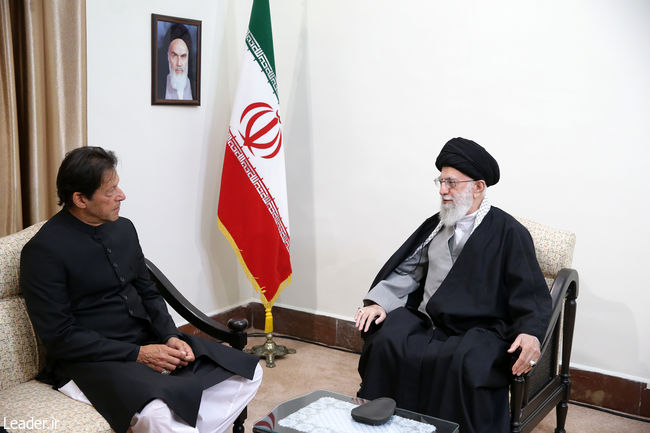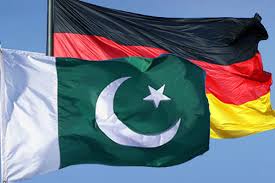Pakistan has been in political turmoil during the last month or so; the causes of conflict rooted in governance, economy and an ever-increasing volume of people going under the proverbial poverty line. Having passed three elections since 2008; each electing a party into power and that party completing the tenure with its stated economic policy and governance; it has been a foregone conclusion in the minds of the average Pakistani voter that whatever his or her choices; will be exercised in the next due general elections.
However, the event-of the last month or so have belied that confidence. The reason being failure of a prime stakeholder to adhere to the basic assumption that the system has the strength to self-correct itself and it is not necessary for the system to be jolted externally to enable it to initiate the correction process.
Before proceeding further, we can take stock of the self-correcting systems at work globally. Turkey, which started as a military-dominated state in the aftermath of the First World War, has now changed itself without resorting to any coup or military intervention. All the changes took place through the ballot. Iran, which has its share of divergent political trends best personified in the form of President-led administrations; has always waited till the next election to set the course for the next four years. These periods have been characterized by a belligerent president; Ahmadinejad’s second tenure; an economy in very bad shape dring Rouhani’s second tenure and so forth. However, the solutions within the system have been allowed to prevail.
Fake radicalism leading to fascism might not be a desired action plan for a state like Pakistan. Unless people want to change the state of affairs in a radical manner; any hope for a change of track will always be a mirage; never realized. Pakistan might not turn out to be a post-revolution China or Iran; but has the danger signs of becoming a Syria or Lebanon; given the high level of polarization
The process at work in Pakistan, it was thought by the majority, had taken its route towards maturity. In 2012; the Supreme Court sent a PPP PM packing as he was found holding the court in contempt. In 2017; a PML(N) PM was sent home; as the positions he undertook, as the PM of a country were not commensurate with his profile.
For an average Pakistani, the vote of no-confidence for the current PTI dispensation was thought to be just another solution within the system to initiate autocorrection. The political line-up was meant to correct the things in a manner that the system is not jolted to the core; but the necessary changes are effected.
However, as things have developed; the voter who facilitated the last political dispensation has been led to believe that the neo-colonial era of the 1950s has returned and the waning world powers have enough leisure at hand to plot coups and political disruptions around the globe.
In such an era, a political movement, which was unable to properly translate its manifesto, resorting to reliving the colonial demons, looks detached from reality. Given the fact that the political following has not been able to critically evaluate the content forwarded by the leadership has helped create an atmosphere where a considerable mass of people are simply not ready to question the leadership which they follow on the basis of personality worship; a type of political culture which is not in vogue globally.
That type of political discourse coupled with refusal to see the reality; that too by a very large group in the society runs the risk of extreme polarization in the country. Experience in political analysis has shown that societies’ refusal to look within for their faults and bad strategy has caused them to look for scapegoats outside their domains.
Here it may be argued that the foreign intervention too has been a globalized phenomenon. In short, colonial tactics have taken the shape of “best international practices” for which the armoury for defence is entirely different. To be able to defend one’s country; it is imperative that a state enhance its knowledge base and technological knowhow, expand its economy, cultivate its market-based advantages and cutting edges; more than organizing a narrative which might be totally outdated to counter the likely onslaught from the outside world.
To take a critical look: Pakistan has come a long way towards that. Its first agreed constitution was not before 1973. It fought a stalemate in 1965; entirely dependent on US gadgetry. Three years ago, it fought off a stalemate with 75 percent of its own indigenized armoury; its locally built combat jet and a heavily customized old machine; Mirage multirole aircraft. The basis of that journey were not slogans; but a sustained R&D; coupled with availability of funds and not to ignore the required leadership commitment.
Pakistan; as a nation-state, might still not be perfect. Its civilizational life cycle might be just tw6 and a half years. A kid that age might have a long way to go. It might be the case for Pakistan too. Pakistan as a South Asian nation state has strived hard in creating a democratic polity; where even successive military takeovers and hybrid systems had to market themselves painstakingly as acceptable entities; making full use, rather overuse of the “fifth-generation” discourse.
The Pakistani political scene cannot afford to advance its narrative like yesteryear’s fascist parties, for instance the Arab nationalist Baath Party. While nation-building strives squarely on the knowledge economy and narrative, political fascism can only be justified to create a one-party dictatorship. Such a dictatorship can undertake greater services to a foreign colonial power than a democratic setup where everything has to be justified in detail.
Making a reference to the 1953 CIA-backed coup against nationalist Iranian PM Mossadeq out of a 2022 vote of no-confidence is taking the country back. With an electorate receptive to such a narrative, it is imperative that public opinion is mo4lded towards a realistic counter narrative.
Towards that end, a pointed reference to 1979 can ease out the narrative. The events in 1979 were part of the reactions to the 1953 coup. The person overthrown in 1979 was the Shah; who was restored in 1953 as part of the coup.
The events in 1979; though an outcome of the wounds of 1953; were defined differently by the leaders of the uprising as well as the populace which responded to that. The cutting edge for Khomeini, which was not with Mossadeq, was the planning to put into action the post-takeover period.
A dispassionate analysis of both Bhutto and Imran Khan, the comparative radicals, shows that neither wanted to depart from the system. Bhutto’s leftist government remained a part of the military pacts like SEATO and CENTO. Likewise Imran Khan remained part of the military programmes, taking part in the military exercises with the USA as well as Saudi Arabia; in the domain of Army, Navy and Air Force. It was a hard fact that both ZAB and IK acted within the system, yet the latter claimed to be close to the one who was the leader of the 1979 revolution in stature!
Fake radicalism leading to fascism might not be a desired action plan for a state like Pakistan. Unless people want to change the state of affairs in a radical manner; any hope for a change of track will always be a mirage; never realized. Pakistan might not turn out to be a post-revolution China or Iran; but has the danger signs of becoming a Syria or Lebanon; given the high level of polarization.























